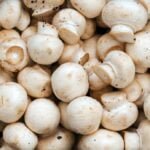Why did the yellow oyster mushroom flush differently the second time?
Title: Enhancing Yellow Oyster Mushroom Cultivation: Analyzing Possible Factors for Variation in Flushing
Introduction:
Yellow oyster mushrooms are a preferred alternative for cultivation, because of their scrumptious taste and dietary advantages. However, typically growers might discover important variations in flushing between the first and subsequent harvests. In this blog put up, we’ll discover numerous elements that may contribute to those variations, reminiscent of improper pinning procedures, competing contaminant organisms, and environmental circumstances. By understanding these elements, you possibly can optimize your cultivation methods and maximize yields in every flush.
I. Improper Pinning Procedures:
A. Importance of correct pin initiation
Proper pin initiation is essential when rising yellow oyster mushrooms. It ensures even progress and facilitates uniform mushroom manufacturing all through every flush.
B. Pin initiation methods
1. Consistent temperature and humidity ranges
Controlling temperature and humidity throughout pin initiation is essential to profitable cultivation. Maintain a temperature vary of 18-24°C (64-75°F) and humidity ranges of 85-95% to advertise optimum pin formation.
2. Light publicity
Keeping a stability between mild and darkness is crucial. During the pinning section, present oblique mild for 12-14 hours each day to set off correct pin improvement.
3. Air alternate
Adequate air circulation is important to forestall the build-up of carbon dioxide and promote pin initiation. Install followers or guarantee correct air flow in your rising space.
II. Competing Contaminant Organisms:
A. Importance of sustaining cleanliness
Contamination from different organisms can hinder the progress and improvement of yellow oyster mushrooms, resulting in inconsistent flushing. It is essential to keep up a clear rising setting.
B. Measures to forestall contamination
1. Sterilization of rising supplies
Properly sterilize substrates, containers, and tools to attenuate the probabilities of contamination from undesirable organisms.
2. Effective sterilization methods
Utilize warmth sterilization strategies, reminiscent of steam or strain cooking, to get rid of potential contaminants. This course of ensures a clear rising medium in your mushrooms.
III. Environmental Conditions:
A. Temperature and humidity necessities
Yellow oyster mushrooms thrive in a selected temperature and humidity vary. Ensure that these circumstances stay constant all through the rising course of to attain optimum flushing.
B. Maintaining correct air circulation
Adequate air circulation performs a vital function in regulating temperature and humidity. Maintain correct air flow and air alternate to forestall the progress of undesirable contaminants and supply a perfect setting for mushroom progress.
IV. Prompt Removal of Late-Developing Mushrooms:
A. Stimulating the subsequent flush
Removing late-developing mushrooms promptly after peak manufacturing can stimulate the initiation of the subsequent flush extra rapidly. This permits for a constant and uninterrupted progress cycle, maximizing total yields.
B. Importance of sanitation practices
Ensure that you simply apply correct sanitation when eradicating spent substrates or mushrooms. This helps reduce the danger of contamination and promotes a wholesome rising setting for future flushes.
Conclusion:
Understanding the potential elements contributing to variations in yellow oyster mushroom harvesting is essential for optimizing cultivation methods. By following correct pinning procedures, sustaining cleanliness, making certain favorable environmental circumstances, and promptly eradicating late-developing mushrooms, you possibly can improve flushing and maximize your yields. Remember, constant and meticulous consideration to element is essential to profitable mushroom cultivation.
Keywords: yellow oyster mushroom, flushing, pinning procedures, contamination, environmental circumstances, maximizing yields, immediate elimination, mushroom cultivation




